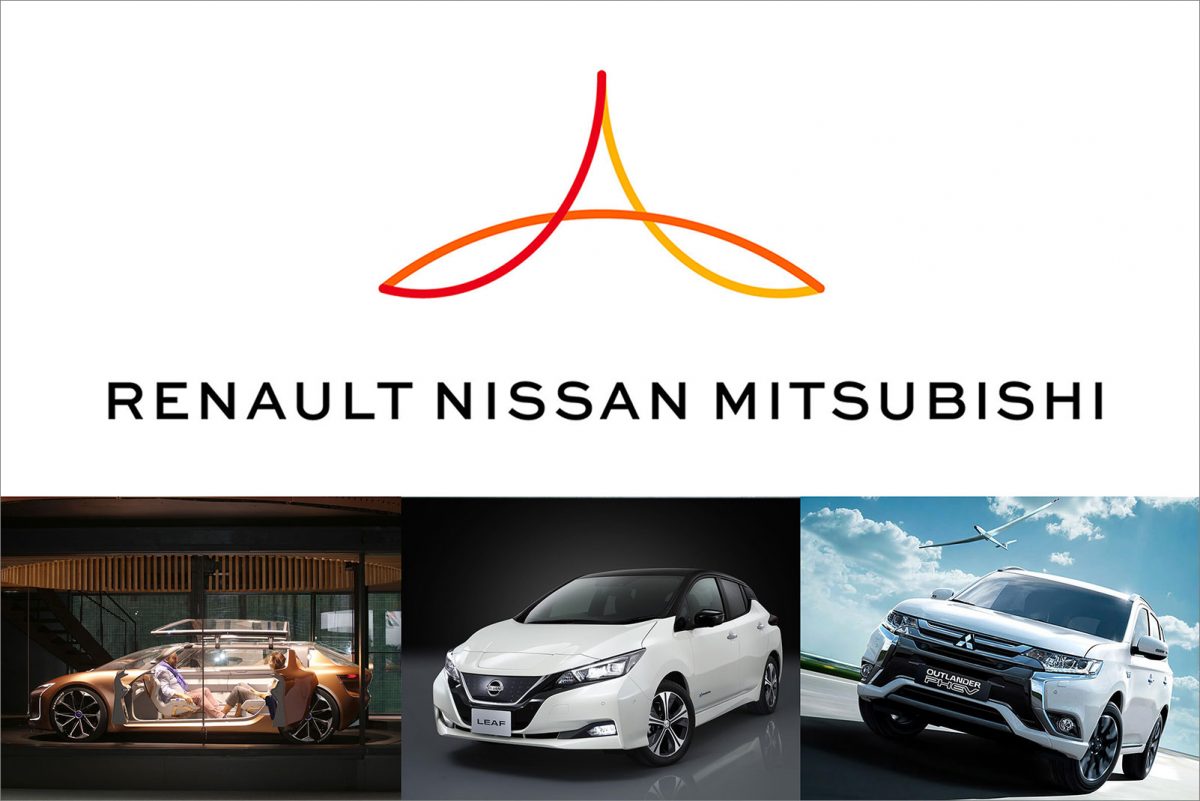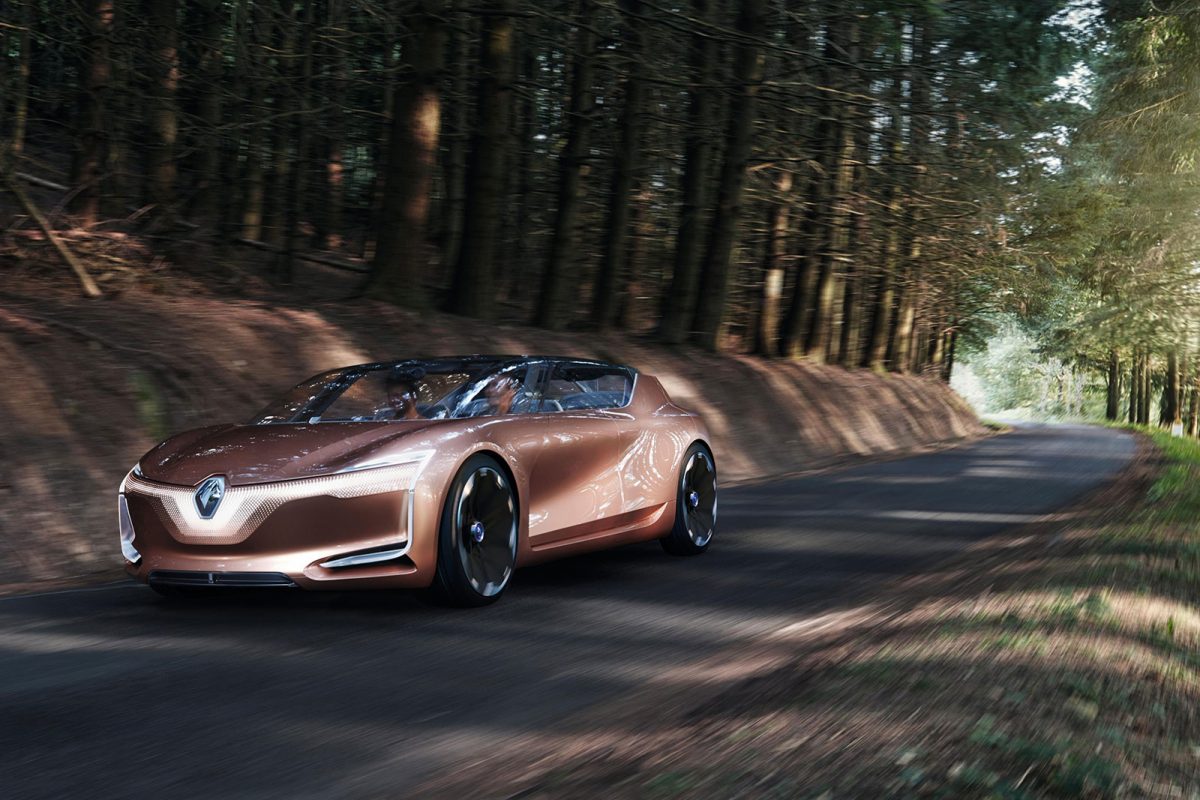Renault-Nissan-Mitsubishi Alliance to launch 12 zero-emission electric vehicles by 2022 in €10 billion plan

Renault, Nissan and Mitsubishi Motors announced today they plan to strengthen cooperation and accelerate use of common platforms, powertrains & new technologies under the banner of Alliance 2022. Their new six-year plan is designed to achieve the following objectives:
– More than 9 million vehicles to share four common platforms
– Proportion of common powertrains to rise from a third to three-quarters of total volumes
– Additional synergies expected from electrification, connectivity and autonomous technologies
– 12 pure electric models to be launched, utilizing common EV platforms and components
– 40 vehicles to be launched with autonomous drive (AD) technology
– To become an operator of robo-vehicle ride-hailing services
Alliance 2022, a six-year plan announced today, has set a new target to double annual synergies to €10 billion by the end of the plan.
Carlos Ghosn, chairman and chief executive officer of the Alliance, said: “Today marks a new milestone for our member companies. By the end of our strategic plan Alliance 2022, we aim to double our annual synergies to €10 billion. To achieve this target, on one side Renault, Nissan and Mitsubishi Motors will accelerate collaboration on common platforms, powertrains and next-generation electric, autonomous and connected technologies. From the other side, synergies will be enhanced by our growing scale. Our total annual sales are forecast to exceed 14 million units, generating revenues expected at $240 billion by the end of the plan.”

Carlos Ghosn, chairman and chief executive officer of the Alliance
Under Alliance 2022, the member companies will increase their use of common platforms, with nine million units based on four common platforms. The plan will also extend the use of common powertrains to 75 percent of total sales. Alliance 2022 plans a major expansion in shared electric vehicle technologies, alongside the development and deployment of advanced autonomous drive systems, vehicle connectivity and new mobility services.
Twelve new zero-emission electric vehicles will be launched by 2022, utilizing new common electric vehicle platforms and components for multiple segments. Over the same period, 40 vehicles will be introduced with different levels of autonomy, all the way to fully autonomous capability. Becoming an operator of robo-vehicle ride-hailing services is a major part of the new mobility services strategy. The launch of a new logo and online presence was also revealed today for the Alliance, symbolizing the growing convergence and cooperation between the member companies.
Mr. Ghosn concluded: “This plan will boost the growth and profitability of our member companies. We intend to deliver on growing synergies, with three autonomous companies cooperating with the efficiency of one. The Alliance has grown and performed with two members since 1999. With Alliance 2022, we will prove that we will grow and perform with three companies or more.”
Alliance 2022 technology building blocks
The technology building blocks will contribute synergies by avoiding development duplication and providing greater and faster access to innovation for the member companies.
1. Reinforcing electric vehicle leadership
As the original pioneer and global leader in pure EV sales, the objective remains to be the number one provider of mainstream, mass market and affordable EVs around the world. By 2022, the member companies will significantly increase their product range to cover all main segments in their key markets of Japan, the USA, China and Europe.
The electrification building block will involve:
- Common, scalable EV platforms for multiple segments by 2020, with a forecast that 70 percent of EV volumes will be based on shared platforms by 2022
- A new family of EV motor and batteries to be introduced from 2020, shared across the member companies
- 12 new pure electric vehicles to be launched by 2022
- More than 600km EV range reached by 2022, based on NEDC homologation methodology
- 30 percent decrease in battery cost from 2016 to 2022
- 15 minutes charging time to deliver range of 230km by 2022, upfrom 90km in 2016, based on NEDC homologation methodology
- Optimized, flat packaging of the battery, providing additional cabin space and greater styling flexibility
- Adoption of Mitsubishi Motors’ new PHEV technology as the common C/D segment PHEV solution by 2022

2. Delivering autonomous-drive and robo-vehicles
The member companies are on track to launch 40 vehicles with different levels of autonomous drive (AD) technologies by 2022.
Test programs are underway in different regions of the world as part of the development of autonomous technologies, which will enable member companies to offer advanced AD functionality for mainstream, mass-market vehicles. The timetable for AD deployment will include:
- 2018: Highly autonomous drive vehicle for use on highways – with a human driver’s continuous monitoring of the environment.
- 2020: Highly autonomous drive vehicle for use in cities – with a human driver’s continuous monitoring of the environment.
- 2020: Highly autonomous drive vehicle for use on highways – with occasional human driver intervention.
- 2022: First fully autonomous drive vehicle – with no human driver intervention necessary
Field tests are continuing on robo-vehicles with partners DeNA (Japan) and Transdev (France), which will pave the way for a new era of mobility in which the group aims to become:
- A key operator of robo-vehicle ride-hailing mobility services, that will include further partnerships
- A major player and provider of vehicles for public transit use and car-sharing

3. Enabling connectivity and mobility services
The Alliance Connected Vehicles and Mobility Services team is developing new mobility services and partnerships. In addition, new connectivity solutions for end-customers will be available in vehicles starting in 2018. These will include:
- A common in-vehicle infotainment system and common in-vehicle connectivity system
- Launch of a Connected Cloud platform to manage all data interfaces
- The cloud platform will provide a gateway to AD capability for robo-vehicle services, self-driving delivery vehicles and shuttles
The Connected Cloud platform will deliver operational efficiencies for member companies such as improved logistics-management and enhanced use of data-sharing in manufacturing and as a mechanism to reduce warranty costs. The connectivity plan will include the development of an open ecosystem that will allow new services and features to be deployed throughout the vehicle lifecycle.

Credit: Renault, Nissan, Mitsubishi Alliance 2022
